Human Hair Follicle: An Update on Biology and Perspectives in Hair Growth Disorders Treatment
January 2014
in “Hair therapy & transplantation”
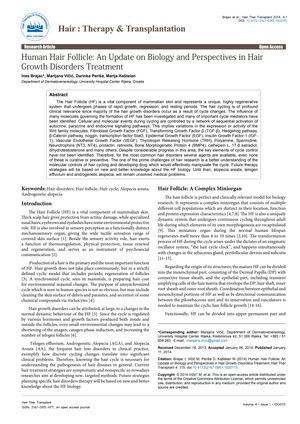
TLDR New treatments for hair growth disorders are needed due to limited current options and complex hair follicle biology.
The 2014 document provides a comprehensive overview of the human hair follicle's biology and the complexities of hair growth disorders. It details the hair growth cycle, the signaling pathways and molecules involved, such as Wnt, FGF, TGF-B, IGF-1, VEGF, TRH, and spermidine, and their roles in the different phases of hair growth. The document acknowledges the limited effectiveness of current treatments like minoxidil and finasteride and underscores the necessity for more research into the molecular mechanisms controlling hair follicle cycling to improve treatment options. It also discusses the influence of hormones, neuropeptides, immune signals, and treatments on hair follicle function, and notes the identification of stem cell populations important for follicle regeneration. Despite advancements in understanding hair disorders, conditions like alopecia areata, telogen effluvium, and androgenetic alopecia continue to present significant challenges.
View this study on omicsgroup.org →
Cited in this study

research Autologous Platelet-Rich Plasma: A Potential Therapeutic Tool for Promoting Hair Growth
Platelet-rich plasma can potentially promote hair growth by stimulating cell growth and increasing certain proteins.

research Hair follicle stem cell differentiation is inhibited through cross‐talk between Wnt/β‐catenin and androgen signalling in dermal papilla cells from patients with androgenetic alopecia
Androgens block hair growth by disrupting cell signals; targeting GSK-3 may help treat hair loss.

research Single follicular unit transplantation reconstructs arrector pili muscle and nerve connections and restores functional hair follicle piloerection
Hair transplant surgery can rebuild muscle and nerve connections, allowing transplanted hairs to stand up like normal hairs.
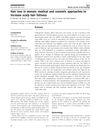
research Hair loss in women: medical and cosmetic approaches to increase scalp hair fullness
Female pattern hair loss can be treated with medications, surgery, and cosmetic products, considering its psychological impact.

research Spermidine Promotes Human Hair Growth and Is a Novel Modulator of Human Epithelial Stem Cell Functions
Spermidine may help reduce hair loss and deserves further testing as a treatment.

research The Hair Follicle Bulge: A Niche for Adult Stem Cells
The hair follicle bulge is an important area for adult stem cells involved in hair growth and repair, with potential for medical use needing more research.

research Pilot Study of 15 Patients Receiving a New Treatment Regimen for Androgenic Alopecia: The Effects of Atopy on AGA
The new treatment regimen was effective in promoting significant hair growth in all 15 male patients with androgenic alopecia.
research Treatment of alopecia areata: “What is new on the horizon?”
New treatments for alopecia areata may target specific immune cells and pathways involved in hair loss.

research Involvement of the bulge region with decreased expression of hair follicle stem cell markers in senile female cases of alopecia areata
Decreased CD200 in hair follicles may cause immune issues in some alopecia areata cases.

research Biology and Genetics of Hair
The document concludes that understanding the genes and pathways involved in hair growth is crucial for developing treatments for hair diseases.

research Polyamines and hair: a couple in search of perfection
Polyamines are important for hair growth, but more research is needed to understand their functions and treatment potential.

research The cycling hair follicle as an ideal systems biology research model
The hair follicle is a great model for research to improve hair growth treatments.

research Innovative use of spironolactone as an antiandrogen in the treatment of female pattern hair loss.
Spironolactone helps regrow hair in women with hair loss.
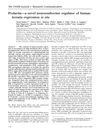
research Prolactin—a novel neuroendocrine regulator of human keratin expressionin situ
Prolactin affects the production of different keratins in human hair, which could lead to new treatments for skin and hair disorders.
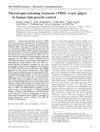
research Thyrotropin releasing hormone (TRH): a new player in human hair‐growth control
TRH stimulates human hair growth and extends the hair growth phase.
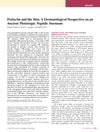
research Prolactin and the Skin: A Dermatological Perspective on an Ancient Pleiotropic Peptide Hormone
Prolactin affects hair growth and skin conditions, and could be a target for new skin disease treatments.

research The Hair Follicle as a Dynamic Miniorgan
Hair follicles are complex, dynamic mini-organs that help us understand cell growth, death, migration, and differentiation, as well as tissue regeneration and tumor biology.
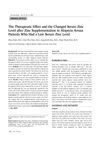
research The Therapeutic Effect and the Changed Serum Zinc Level after Zinc Supplementation in Alopecia Areata Patients Who Had a Low Serum Zinc Level
Zinc supplements increased zinc levels in some hair loss patients but didn't significantly improve hair growth.
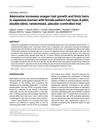
research Adenosine increases anagen hair growth and thick hairs in Japanese women with female pattern hair loss: A pilot, double-blind, randomized, placebo-controlled trial
Adenosine lotion improves hair growth and thickness in women with hair loss.

research Thyroid Hormones Directly Alter Human Hair Follicle Functions: Anagen Prolongation and Stimulation of Both Hair Matrix Keratinocyte Proliferation and Hair Pigmentation
Thyroid hormones help hair grow, reduce hair loss, and increase hair pigment.

research TNF superfamily in skin appendage development
TNF family proteins are crucial for the development of skin features like hair, teeth, and mammary glands.

research Hair Follicle Regeneration
The book "Hair Follicle Regeneration" discusses the potential of regenerating human hair follicles or activating dormant ones as a possible cure for baldness, and the promising role of new technologies like 3D printing in this field.

research Skin and hair: models for exploring organ regeneration
Skin and hair can help us understand organ regeneration, especially how certain stem cells might be used to form new organs.
research Development of Alopecia Areata Universalis in a Patient Receiving Adalimumab
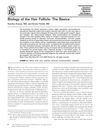
research Biology of the Hair Follicle: The Basics
The document concludes that understanding hair follicle biology can lead to better hair loss treatments.
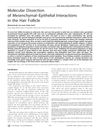
research Molecular Dissection of Mesenchymal–Epithelial Interactions in the Hair Follicle
Understanding gene expression in hair follicles can reveal insights into hair growth and disorders.
research Premature termination of hair follicle morphogenesis and accelerated hair follicle cycling in Iasi congenital atrichia (fzica) mice points to fuzzy as a key element of hair cycle control
The fuzzy gene is crucial for controlling hair growth cycles.
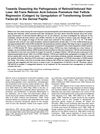
research Towards Dissecting the Pathogenesis of Retinoid-Induced Hair Loss: All-Trans Retinoic Acid Induces Premature Hair Follicle Regression (Catagen) by Upregulation of Transforming Growth Factor-β2 in the Dermal Papilla
All-trans retinoic acid causes hair loss by increasing TGF-β2 in hair follicle cells.

research Molecular principles of hair follicle induction and morphogenesis
Hair follicle development is controlled by interactions between skin tissues and specific molecular signals.
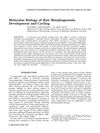
research Molecular biology of hair morphogenesis: Development and cycling
Understanding hair growth involves complex interactions between molecules and could help treat hair disorders.
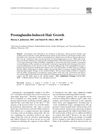
research Prostaglandin-Induced Hair Growth
Latanoprost can make eyelashes longer, thicker, and darker.

research Induction of the hair growth phase in postnatal mice by localized transient expression of Sonic hedgehog
Activating the Sonic hedgehog gene in mice can start the hair growth phase.

research The Biology of Hair Follicles
Hair follicle biology advancements may lead to better hair growth disorder treatments.

research What controls hair follicle cycling?
The control system for hair growth cycles is not well understood and needs more research.
research Whole Hair Follicle Culture
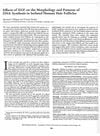
research Effects of EGF on the Morphology and Patterns of DNA Synthesis in Isolated Human Hair Follicles
EGF makes hair follicles grow longer but stops hair production.
research The secret life of the hair follicle
Hair follicles create different cell layers and proteins, controlled by various molecules.
Related

research Safety and Efficacy of Trimax-360 Serum in Healthy Adult Subjects with Mild to Moderate Alopecia of the Scalp
Trimax-360 Serum, when used for 98 days, safely and effectively improves hair growth, thickness, and density without any side effects.

research Hair loss (alopecia or baldness)
Baldness is often hereditary and linked to male hormones, becoming noticeable when half the hair is lost.

research Treatments of hereditary hair loss (alopecia)
Some treatments like minoxidil, finasteride, and surgery can help with hereditary hair loss.
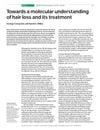
research Towards a molecular understanding of hair loss and its treatment
Future hair loss treatments should aim to extend hair growth, reactivate resting follicles, reverse shrinkage, and possibly create new follicles, with gene therapy showing promise.

research Treatment of Hair Loss
Finasteride and minoxidil are effective for hair loss, but continued research is needed for better treatments.
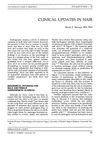
research CLINICAL UPDATES IN HAIR
Most treatments for hair loss in 1997 were not effective for most people, and maintaining hair growth was difficult.

research Disorders of hair growth : diagnosis and treatment
Many hair loss conditions can be treated.